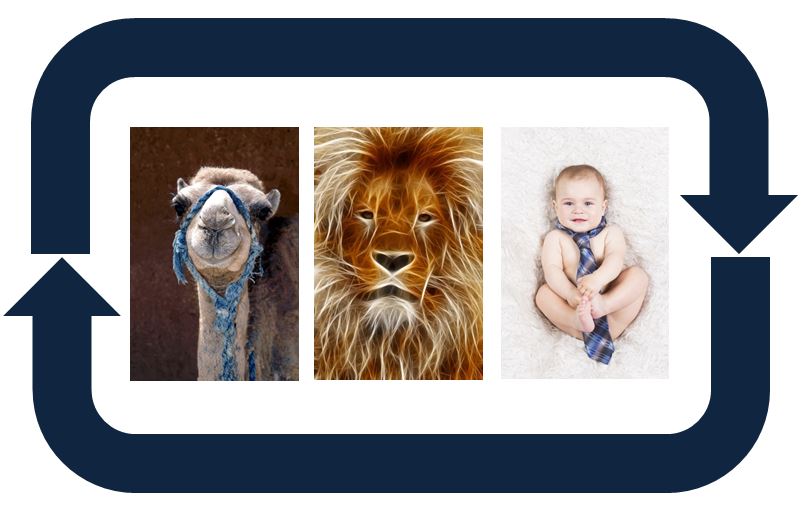
What kind of professional are you? A camel who asks what do I need to do? A lion who asks why do I need to do it? A child who wants to do it differently?
Close access to intellectual stimulation is one of many perks of being in academia. Last March I attended a workshop lead by my Language Studies (LS) colleague Michel Gueldry on “Integrating one’s personality by seeing what we don’t see,” as part of a series of workshops organized by another LS colleague, Jinhuei Dai.
Michel focused on self-observation and emotional intelligence by using, among other provocations, a parable by Friedich Nietzche, The 3 Metamorphosis of the Spirit, from Thus Spake Zarathustra.
Our discussion was so fertile that months later I still find myself going back to the three images of the spirit and re-purposing the metaphor. You don’t have to agree with Nietzsche’s teleology (from camels to lions and from lions to the child) to recognize the clear-sighted, evocative power of his writing.
“A child is innocence and forgetting, a new beginning, a game, a wheel that propels itself, a first movement, a sacred Yes. Yes, for the game of creating”.
Thus, I shared this parable with some colleagues who are participating in a series of conversations about transformative practice, teaching, and learning. What kind of professionals do we want to see graduating from our institutions? Camels? Lions? Children?
It’s easy to see the child as the entrepreneur, the creative type… A sacred yes! It’s sometimes the outsider with innovative ideas, the creator of disruptive solutions, prototypes, products and sometimes problems… But new problems. The child doesn’t understand or doesn’t care about the criticism, the destructive energy of the lion.
And the lion makes fun of the naïve kid. The lion fights imposed values, status quos, establishments, traditions, old habits… A sacred no! The lion is particularly cozy in the cages of academia but you can find them anywhere, fighting real or imaginary dragons. In the best scenario, they challenge our superficial ideas and make us better thinkers and doers.
The camel doesn’t get much credit. They are the comic butt of arrogant children. They are not always respected by the lion. And yet, we also need to think and act like camels. Yes. And by yes I mean no. No to Nietzsche! Kneeling down like the humble camel, accepting the existence of other values, traditions, practices and recognizing our own cultural burden… All of this is important, particularly in the academic context.
See the dromedary as the fast doer (camels are fast), willing to go the extra mile, able to store knowledge, able to make water from fat! In the worst scenario, camels get into professional traps, vicious circles, alienation, bulling, lacking the verbal muscle, the claws of the lion or the slippery skills of the child.
We all need to be camels, lions, and children. Competent, critical, and creative. The question is when and how. And how much. The answer should emerge from your own multiple experiences, values, goals, needs, adapting, blending with others, being curious, creating realities with the transformative stick of languages, ideas, methods, technologies, swimming furiously, making noise, scaring the sharks, going against the current… at the right time.
Are you the young fish asking what the hell is water? Are you the ape, the Vygotskian ape, sharpening your magic wands, interacting and learning from your peers? Are you a chameleon, a multilingual, multilayered professional, a blend of Malala Yousafzai, Noam Chomsky, Warren Buffet, Melinda Gates, MacGyver, and a Lonely Planet writer?
Can you do well and do good? I want to say yes. Others disagree.